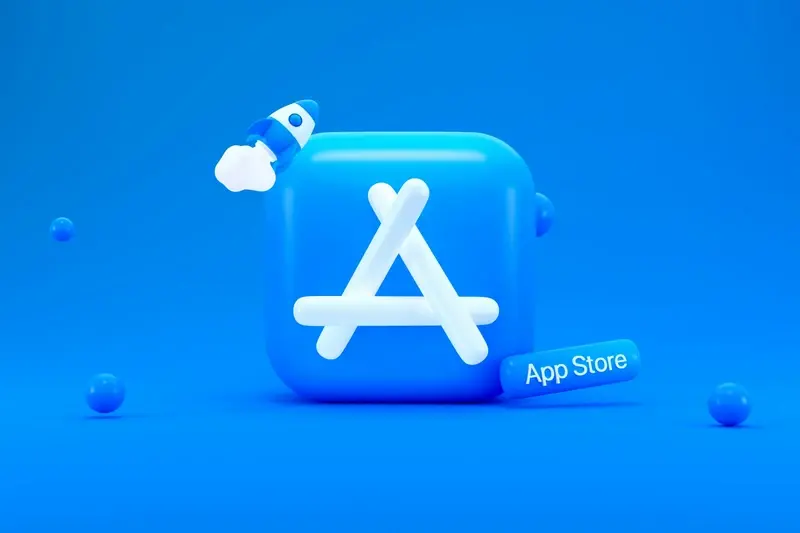How Do I Get More People to Rate My App in the Store?
Getting people to rate your app is probably one of the most frustrating parts of running a mobile app business. You've built something brilliant, users are downloading it every day, but those five-star ratings? They're harder to come by than you might expect. I've seen apps with thousands of active users sitting on just a handful of reviews—and it's honestly a bit mad when you think about it.
Here's the thing though: most people use apps without ever thinking about leaving a rating. They download, they use, they move on with their day. It's not that they don't like your app; they're just busy living their lives. But here's what really gets me—when something goes wrong or they hit a bug? Suddenly they've got all the time in the world to leave a one-star review!
The apps that succeed at getting ratings understand that asking isn't enough—you need to create moments where users actually want to help you succeed
After working with hundreds of apps across different industries, I've learned that getting more ratings isn't about pestering users with constant pop-ups. It's about understanding user psychology, timing your requests perfectly, and most importantly—giving people a reason to care about your app's success. The best rating strategies feel natural; they don't interrupt the user experience but actually enhance it. Whether you're a startup trying to get your first hundred reviews or an established app looking to boost your rating from 3.2 to 4.5 stars, the principles remain the same. You need to be smart about when, how, and why you ask for ratings.
Why App Ratings Matter for Your Success
Let me be blunt about this—your app rating isn't just a vanity metric. It's basically your shop window display that millions of potential users walk past every day. And just like you wouldn't buy from a sketchy-looking store with broken windows, people won't download apps with terrible ratings.
I've watched brilliant apps with 2-star ratings struggle to get downloads, while mediocre apps with 4.5 stars absolutely dominate their market. It's a bit mad really, but that's how the app stores work. Apple and Google's algorithms heavily weight ratings when deciding which apps to show in search results; an app with poor ratings gets buried so deep you'll need a mining permit to find it.
But here's the thing—ratings affect more than just visibility. They directly impact your conversion rate from store visits to actual downloads. Studies show that apps with ratings above 4 stars get downloaded at rates 3-4 times higher than apps sitting below 3 stars. That's not a small difference, that's make-or-break territory.
The Psychology Behind Star Ratings
Users treat app ratings as social proof. When someone sees your app has 4.7 stars from thousands of reviews, their brain interprets that as "lots of people love this, so I probably will too." It's shortcuts thinking at work—and it happens in milliseconds while they're scrolling through search results.
The sweet spot? Anything above 4.2 stars generally converts well, but once you hit 4.5+ stars, you're in the premium league where users actually expect to pay for quality. Apps below 3.5 stars? You're fighting an uphill battle that gets steeper every day.
Understanding When Users Actually Leave Reviews
After building hundreds of apps over the years, I've noticed something interesting about when people actually bother to leave reviews. It's not random at all—there are specific moments when users are most likely to share their thoughts about your app.
Most people leave reviews when they're experiencing strong emotions about your app. That could be love it or hate it, but rarely anything in between. The tricky bit is that negative experiences tend to motivate reviews more than positive ones. Someone who's frustrated is much more likely to vent in a review than someone who's quietly satisfied.
The Peak Emotional Moments
Here's what I've observed about when reviews actually happen. Users typically review apps during these specific situations:
- Right after completing a major task successfully (like finishing a workout or making a purchase)
- When they hit a frustrating bug or can't figure out how to do something
- After discovering a feature that genuinely surprises or delights them
- When they're comparing your app to a competitor they just tried
- During moments of high engagement, like achieving a personal milestone
Users are three times more likely to leave reviews within 24 hours of experiencing either exceptional satisfaction or significant frustration with your app.
The other thing that triggers reviews? Social proof. When users see that an app has lots of recent reviews, they're more inclined to add their own voice to the conversation. It's like joining a discussion that's already happening.
What doesn't work is asking for reviews during neutral moments—when users are just going about their normal routine with your app. They'll dismiss the request without thinking twice because there's no emotional driver pushing them to act. Understanding this timing is absolutely critical for your rating strategy.
Getting the Timing Right for Rating Requests
Right, let's talk about timing—because getting this wrong is probably the fastest way to annoy your users and tank your ratings. I've seen too many apps that pop up with rating requests the moment someone opens the app for the first time. Honestly, it's mental. Why would someone rate an app they've barely used?
The sweet spot for asking for ratings comes after users have experienced genuine value from your app. This isn't about counting app opens or measuring days since install—it's about identifying moments when people have actually achieved something meaningful. For a fitness app, that might be after they've completed their first workout. For a productivity app, maybe after they've ticked off a few tasks or finished a project.
Reading the User's Journey
You need to map out your user journey and spot those "aha moments" where people really get what your app is about. These are your golden opportunities. If someone just saved £50 using your budgeting app or successfully learned their first phrase in a language app, they're feeling pretty good about your product right then.
But here's the thing—don't ask everyone. Some users will naturally become advocates without prompting, whilst others might be struggling with your app. Smart apps track user behaviour and only ask for ratings from people who are clearly engaged. If someone's been using your app regularly for a couple of weeks, they're much more likely to leave a positive review than someone who downloaded it yesterday and hasn't really figured it out yet. The data doesn't lie on this one.
Making Your App Worth Rating in the First Place
Here's the thing nobody wants to hear—if your app isn't good, no amount of clever rating requests will save you. I've seen clients spend months perfecting their review prompts while their app crashes every third time someone opens it. It's like polishing a car that won't start, basically.
Users leave ratings for one simple reason: they have feelings about your app. Strong feelings. And those feelings come from their actual experience using it, not from how nicely you asked them to rate it. If your app is slow, confusing, or doesn't solve the problem it promised to solve, you're fighting an uphill battle before you even begin.
The Foundation That Actually Matters
Speed is everything in mobile. If your app takes more than three seconds to load, people notice. If it takes more than five seconds, they get annoyed. Beyond that? They start looking for alternatives. I've worked on apps where fixing loading times increased ratings by half a star without changing anything else.
Your onboarding process needs to be brilliant too. Not flashy or complicated—just clear about what value users will get and how to get it. Most apps lose users in the first session because people can't figure out what they're supposed to do or why they should care.
The best rating strategy is building something people actually want to recommend to their friends
Regular updates matter more than most people realise. Apps that get updated frequently signal to users that someone cares about making them better. Even small bug fixes and minor improvements show you're listening and working to improve their experience. Dead apps—ones that haven't been updated in months—rarely get positive ratings, regardless of how good they were initially.
Smart Ways to Ask Without Being Annoying
Right, let's talk about the actual ask—because this is where most apps completely mess it up. You know those apps that bombard you with rating requests the second you open them? Don't be that app. Nobody likes that app.
The golden rule here is context. Ask when users are feeling good about your app, not when they're frustrated or rushed. I've seen apps that trigger rating prompts right after a user completes a satisfying action—like finishing a workout, completing a level, or successfully making a purchase. That's smart timing.
But here's the thing—make it feel optional, even when it isn't technically optional. Instead of the standard "Rate our app!" popup, try something more conversational: "Loving the app? A quick rating would help us loads." It sounds friendlier and less demanding.
Different Request Approaches That Work
You've got several ways to ask, and mixing them up keeps things fresh:
- The soft ask: "How are you finding the app so far?" with options for feedback
- The grateful approach: "Thanks for using our app! Mind leaving a review?"
- The milestone celebration: "Congrats on your 10th workout! Help others discover us?"
- The feedback filter: Ask if they're enjoying the app first, then direct happy users to reviews
One trick I've learned? Give users an easy way to say no without feeling guilty. Add a "Maybe later" option that actually means later—not "ask again tomorrow." And if someone says they're not happy, don't ask for a rating; ask for feedback instead. You might turn a potential 1-star review into a 5-star one after you fix their issue.
Remember, its about building a relationship with your users, not extracting something from them. The apps that get this right see much better response rates and genuine reviews.
Responding to Reviews the Right Way
Right, let's talk about something that makes most app developers break out in a cold sweat—responding to reviews. I get it, nobody likes criticism. But here's the thing, how you respond to reviews (both good and bad) can actually boost your ratings more than you'd expect.
First off, you should be responding to reviews. I know it's tempting to ignore them, especially the negative ones, but users notice when developers engage. It shows you care about their experience and are actively working to improve things. Plus, other potential users read these responses too.
For positive reviews, keep it simple. Thank them genuinely and maybe mention a specific feature they liked. Don't go overboard with corporate speak—nobody wants to read a press release. Something like "Thanks for the kind words about the new search feature! Really glad it's saving you time" works perfectly.
Now for the tricky bit—negative reviews. Take a deep breath. Don't get defensive, even when the user is being unreasonable. Address their specific concern, apologise if something went wrong, and explain what you're doing to fix it. If it's a technical issue, ask them to contact support directly so you can help properly.
Always respond within 24-48 hours when possible. Quick responses show you're actively managing your app and caring about user feedback.
Here's something many developers miss: responding to reviews can actually encourage more people to leave reviews. When users see you're actively engaged, they're more likely to share their own experience. It creates a proper conversation around your app rather than just a list of complaints or praise.
The key is being human in your responses. Users can spot generic copy-paste replies from a mile away, and it makes you look like you don't actually care about their feedback.
Common Mistakes That Kill Your Rating Strategy
Right, let's talk about the stuff that makes users want to throw their phones across the room when they're using your app. I've seen brilliant apps with terrible ratings because of a few simple mistakes that could've been avoided.
The biggest mistake? Asking for ratings at completely the wrong moment. I mean, seriously—asking someone to rate your app while they're in the middle of trying to complete a purchase or right after they've just downloaded it is just asking for trouble. Users haven't had time to form an opinion yet, and you're already bothering them with pop-ups.
Another classic error is the "rate us or else" approach. You know what I'm talking about—those apps that basically hold their features hostage until you give them a 5-star rating. It's manipulative and users can smell it a mile away. Sure, you might get some ratings in the short term, but you'll also get plenty of angry 1-star reviews calling out your dodgy tactics.
Here's something that drives me mad: apps that don't fix their obvious problems but keep asking for ratings anyway. If your app crashes every time someone tries to log in, maybe sort that out before pestering people for positive reviews? Users aren't stupid—they know when an app is broken, and they'll tell everyone about it in the reviews.
And please, for the love of all that's holy, don't send push notifications asking for ratings. Nothing says "delete this app immediately" like getting interrupted by a notification that's basically just asking you to do the developer a favour. Keep your rating requests inside the app where they belong.
Conclusion
Getting more people to rate your app isn't rocket science, but it does require a thoughtful approach. I've seen too many developers treat ratings like an afterthought—something they bolt onto their app at the last minute with a generic popup that annoys users more than anything else.
The truth is, good ratings start long before you ever ask for them. They start with building an app that people genuinely want to use and recommend to their friends. No amount of clever timing or persuasive messaging can save a poor user experience. But when you've got something worth rating? That's when these strategies really pay off.
Remember that your users are real people with busy lives—they're not going to rate your app just because you asked nicely. They need a reason. Maybe you solved a problem for them, saved them time, or simply made their day a bit better. When you understand what value your app brings to people's lives, asking for ratings becomes much more natural.
The biggest mistake I see is developers who get so focused on the numbers that they forget about the relationship with their users. Sure, a high rating helps with app store rankings and downloads. But those ratings represent real people who took time out of their day to share their opinion about your work. Treat that feedback—good or bad—with the respect it deserves.
Start small, test different approaches, and always keep your users first. The ratings will follow naturally when you get everything else right.
Share this
Subscribe To Our Learning Centre
You May Also Like
These Related Guides

How Do I Measure User Satisfaction in My Mobile App?

What Makes An App Successful In The App Store?



